Invasive species(hillandale)
1/9
There's no tags or description
Looks like no tags are added yet.
Name | Mastery | Learn | Test | Matching | Spaced |
|---|
No study sessions yet.
10 Terms
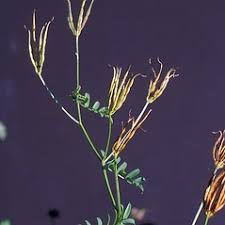
Securigera varia — Crown vetch
Securigera varia is a low-growing, herbaceous vine that usually forms thickets up to 3 ft. (0.9 m) in height.
Foliage
The leaves are dark green pinnately compound with 9 to 25 pairs of leaflets and a terminal leaflet. Leaflets are 0.75 in. (1.9 cm) long.
Flowers
Flowering occurs in the summer. The pea-like, fragrant flowers are white to pink to purple and resemble a large clover flower because they are found in long-stalked clusters.
Fruit
Seed pods are segmented, pointed, borne in crown-like clusters. The straw-colored seeds are less than 0.3 in. (0.9 cm) long, round, flat, and winged.

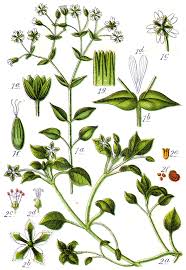
Stellaria media — Common chickweed
Opposite, oval leaves, 0.3-1.2”
long that are pointed at the tip. Light green
and smooth or slightly hairy.
Stem: Many branches that spread
horizontally. While initially small, dense
patches can form with stems up to 2’ long.
Upper portions of the stem may be upright.
Stem is smooth except for a single band of
hairs on one side. Common chickweed grows erect to prostrate and sometimes is matlike. Stems are mostly forked and have a line of hairs down either side. Leaves are broadly egg shaped, have a pointy tip, and are mostly hairless or have hairy margins at the base. The leaves are spaced evenly and are opposite to one another along the stem. Lower leaves are stalkless and smaller than the upper, stalked leaves.
Common chickweed blooms mostly from February to September. Fruits are tiny, non-fleshy, egg shaped and contain numerous minute seeds. The tiny seed is pale tan to pale reddish brown.
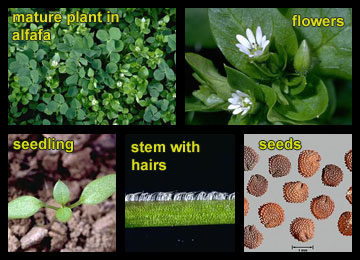

Persicaria perfoliata — Mile-a-minute weed (also known as Asiatic tearthumb)
climbing, branching vine that grows up to 20 ft (6 m) long from a shallow root system. Stems, leaf petioles, and the undersides of leaf veins are covered in recurved spines. Leaves are alternate, triangular, and up to 3 in (7½ cm) long. Saucer-shaped ocrea surround the stem at each leaf node. Flowers are green and inconspicuous. Fruits are berry-like, blue at maturity, and each produces one hard, shiny black se
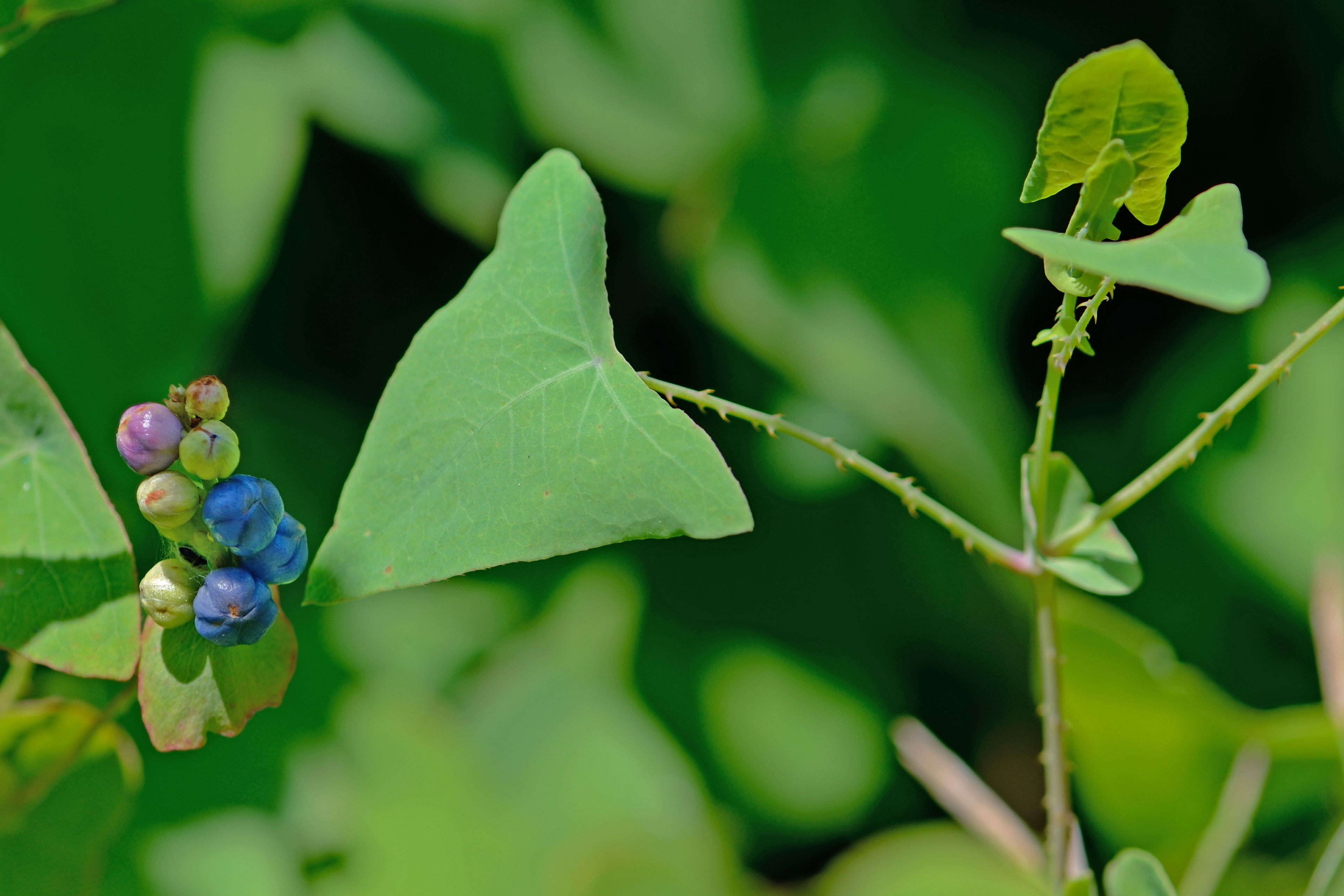
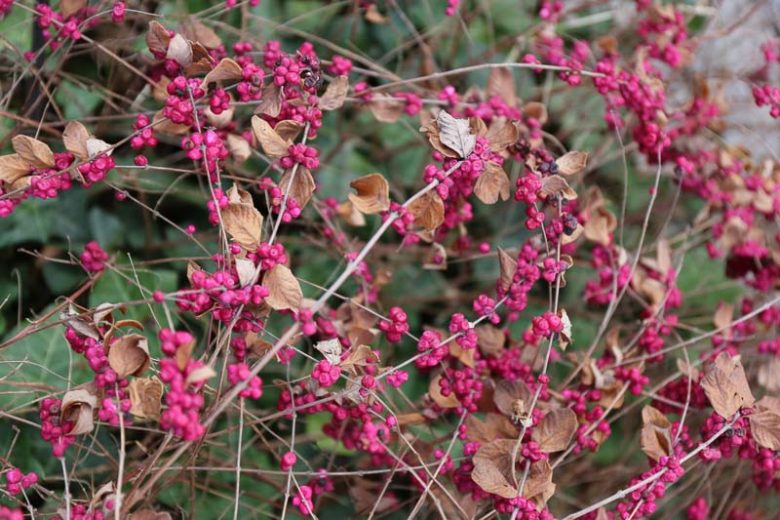
Symphoricarpos orbiculatus — Coralberry
Buckbrush, or coralberry is a thicket-forming shrub that spreads by roots, usually 2–4 feet tall. Leaves are simple and opposite, the blades 1½–2 inches long, ½–1½ inches wide, egg-shaped to oval, the upper surface is dull green, smooth or slightly hairy; the lower surface is paler, smooth to hairy; the leaf stalk is very short, less than ⅛ inch long, hairy.
Bark is brown, peeling into small, short flakes that are easily rubbed off or shredded into long, thin strips; the wood is soft, nearly white, with a small pith. Flowers July–August, flowers are greenish white, sometimes purplish
Fruits September–October

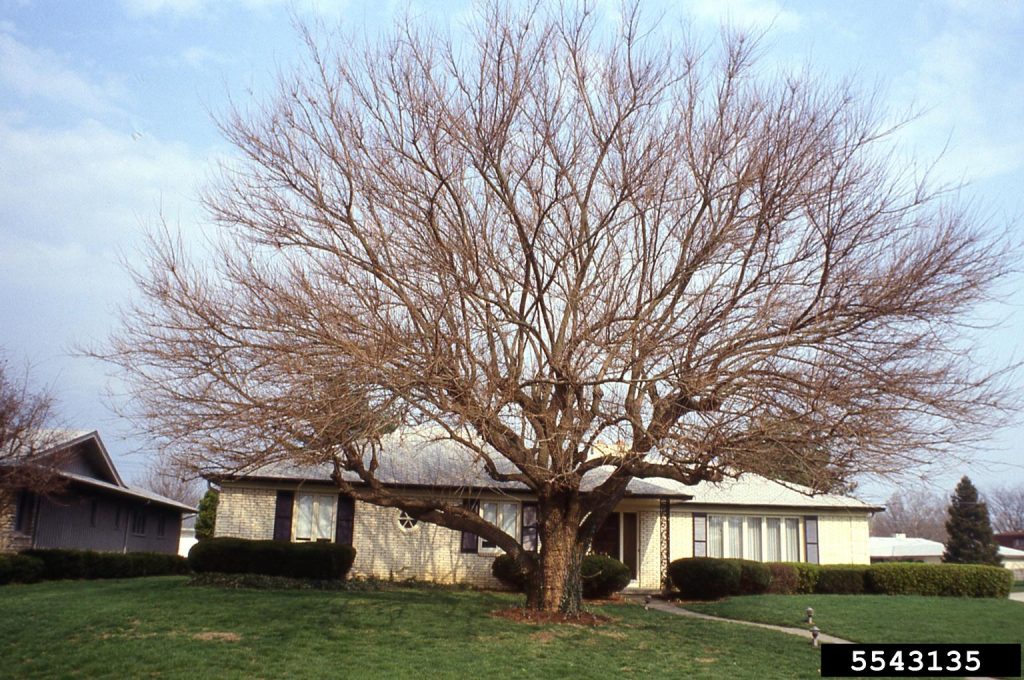
Morus alba — White mulberry
Medium-sized tree with a short trunk, broad, round crown, and many fine twigs. Leaves are alternate, simple, 2–6 inches long, with 0–5 lobes, coarse teeth, pointed tip. Undersurface smooth, paler than above. Bleeds milky sap.
Bark is thin, brown, shallow grooves and long, narrow ridges, Flowers April–May, Fruits June–August, blackberry-like; white to pink to purple
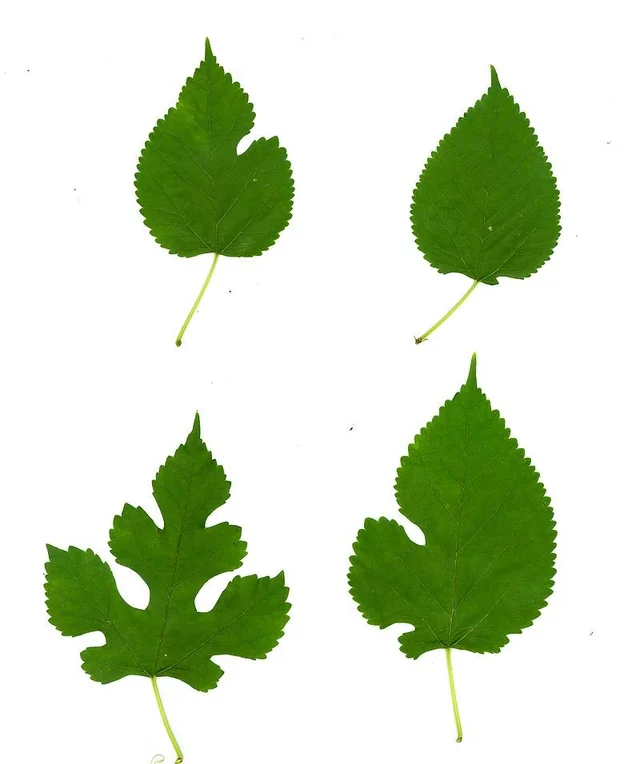

Perilla frutescens — Beefsteak plant or Shiso (invasive ornamental herb)
In the mint family~fragrant. The stems are covered with white hairs and the outside and inside of the flowers are also hairy. Leaves are green to deep reddish-purple, oval shaped, with a pointed tip and are toothed (serrate) around the edges. The stems are square (4-sided) and the leaves are opposite along the stems. Plant flowers are pinkish-white and 2-lipped, and many flowers occur along a stalk. They bloom in the fall. The fruit are brownish capsules that split open to reveal seeds when ripe. often found along riparian areas, roadsides, forest edges and in fields.

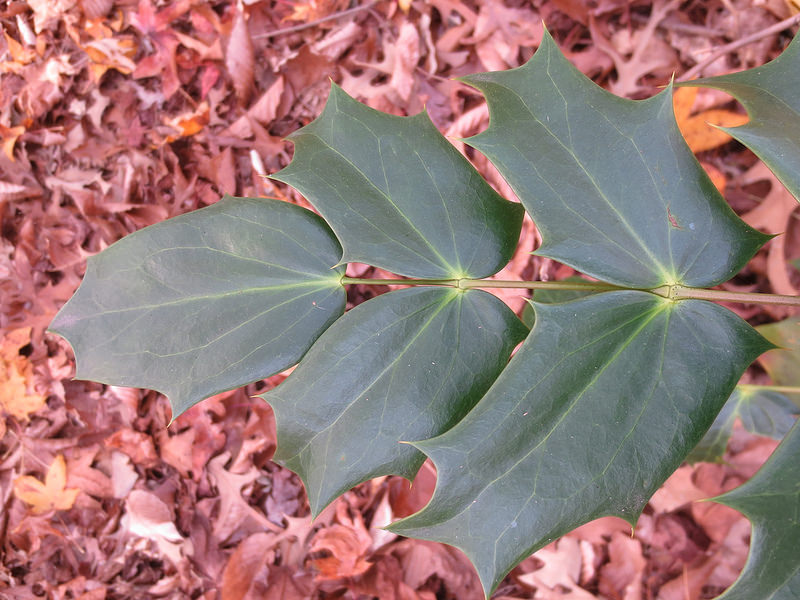
Berberis bealei — Leatherleaf mahonia
evergreen shrub that can grow from 5-10 ft., Flowering occurs in late winter and early spring when fragrant, lemon-yellow flowers develop, greenish to blueish black and grey berries in clusters, noxious
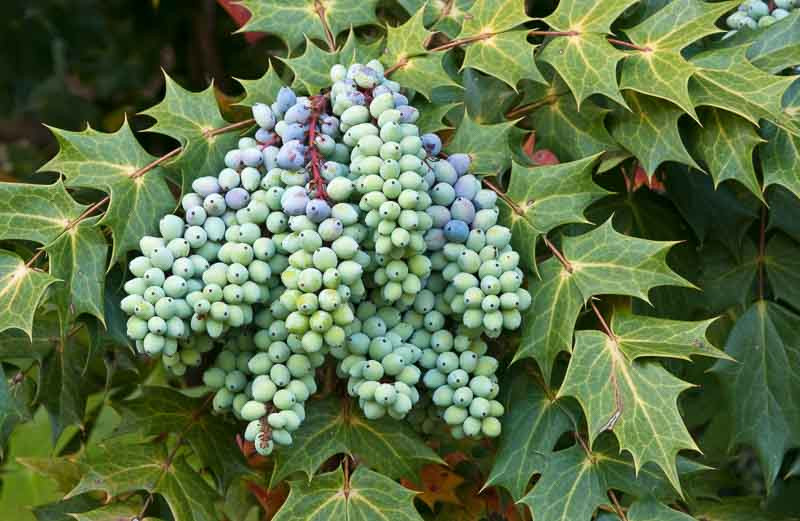
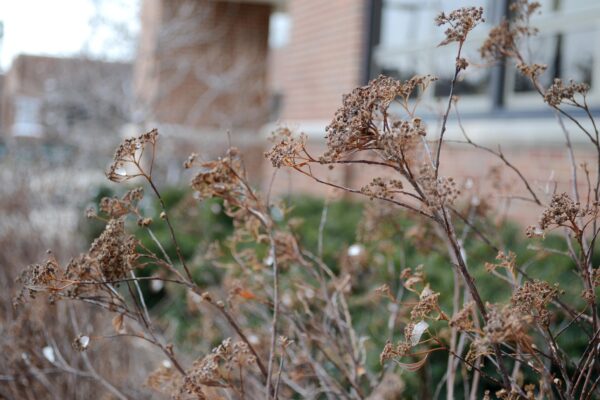
spiraea japonica — Japanese spirea
low, mounded, shrub-like form, small toothed, ovate leaves that are often dark green or reddish, and clusters of pink or reddish flowers that bloom on new wood in the summer. 2-6 ft, noxious,

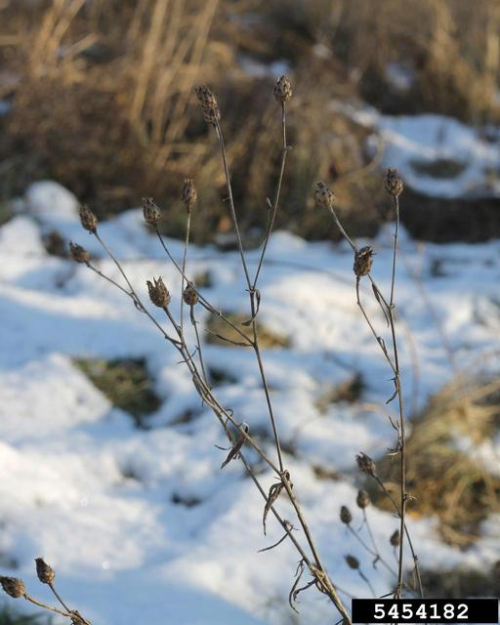
Centaurea stoebe — Spotted knapweed
Noxious, 2-5ft tall, hairy deeply lobed lower leaves, bracts at base of flower, can stay in soil for 8 years, rototilling for handling, purple flowers

A noxious plant
a plant designated by an authority as being harmful to agricultural crops, natural ecosystems, livestock, or human interests. These are often non-native, fast-growing, and aggressive plants that displace native vegetation, can be poisonous, and may interfere with infrastructure like roads and buildings.